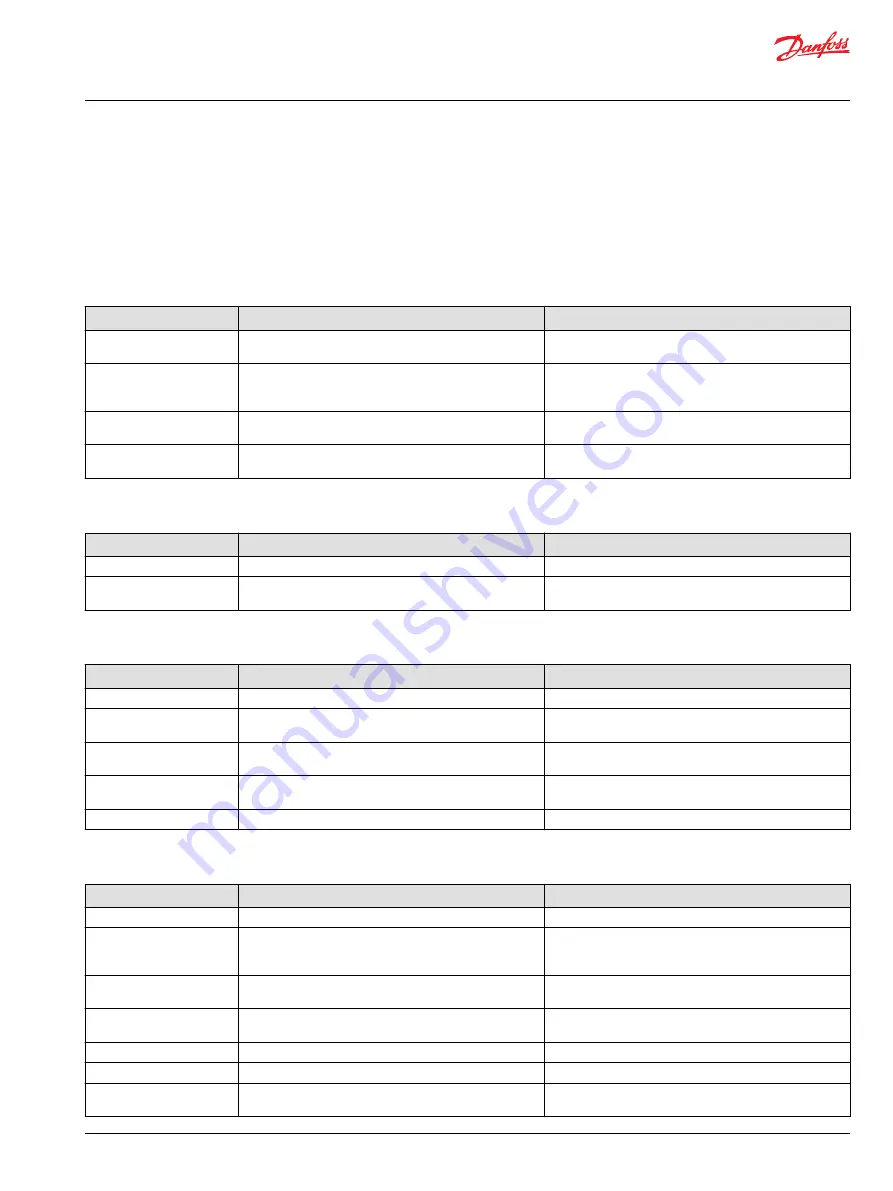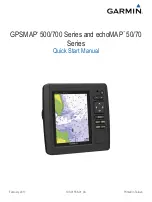
Overview
This section provides general steps to follow if you observe undesirable system conditions. Follow the
steps listed until you solve the problem. Some of the items are system specific. We reference the section
in this manual of more information is available. Always observe the safety precautions listed in the
Introduction section and any precautions related to your specific equipment.
System Operating Hot
Item
Description
Action
Oil level in reservoir.
Insufficient hydraulic fluid does not meet cooling demands
of system.
Fill reservoir to proper level.
Heat exchanger.
Heat exchanger is not sufficiently cooling
the system.
Check air flow and input air temperature
for heat exchanger. Clean, repair or
replace heat exchanger.
System relief pressure
settings
If the system relief valves are worn, contaminated, or valve
settings are too low, the relief valves get overworked.
Verify settings of high pressure relief valves
and adjust or replace as necessary.
System pressure.
Frequent or long term operation over system relief setting
creates heat in system.
Measure system pressure. If pressure
is too high, reduce loads.
Transmission Operates Normally in One Direction Only
Item
Description
Action
Control linkage
Control linkage is operating improperly.
Repair/replace linkage
Interchange charge check/
HPRVs
Interchanging the charge check/HPRVs will show if the
problem is related to the valve function.
If the problem changes direction, replace the defective
valve.
System will not Operate in Either Direction
Item
Description
Action
Oil level in reservoir
Insufficient hydraulic fluid to supply system loop.
Fill reservoir to proper level.
Charge pressure with pump
in neutral
Low charge pressure insufficient to recharge system loop
Measure charge pressure with the pump in neutral. If
pressure is low, go to next step.
System pressure
Low system pressure does not provide enough power to
move load.
Measure system pressure. Continue to next step.
Charge check/HPRVs
Low system pressure does not provide enough power to
move load.
Repair or replace charge check/HPRVs
Control linkage
Linkage operating improperly.
Repair/replace linkage
System Noise or Vibration
Item
Description
Action
Reservoir oil level
Low oil level leads to cavitation.
Fill reservoir.
Aeration of the oil/charge
inlet vacuum
Air in the system decreases efficiency of units and controls.
Air in the system is indicated by excessive noise in HST,
foaming in oil, and hot oil.
Find location where air is entering into the system and
repair. Check that inlet line is not restricted and is proper
size.
Cold oil
If oil is cold, it may be too viscous for proper function and
pump cavitates
Allow the oil to warm up to its normal operating
temperature with engine at idle speed.
Charge inlet vacuum
High inlet vacuum causes noise/cavitation.
Check that inlet line is not restricted and is proper size.
Check filter.
Shaft couplings
A loose shaft coupling causes excessive noise.
Replace loose shaft coupling.
Shaft alignment
Misaligned HST and prime mover shafts create noise.
Align shafts.
Charge check/HPRVs
Unusual noise may indicate sticking valves. Possible
contamination.
Clean/replace valves and test the unit.
Service Manual
LDT 21/24/32 Closed Circuit Axial Piston Transmission
Troubleshooting
©
Danfoss | June 2022
AX417167456877en-000101 | 19







































